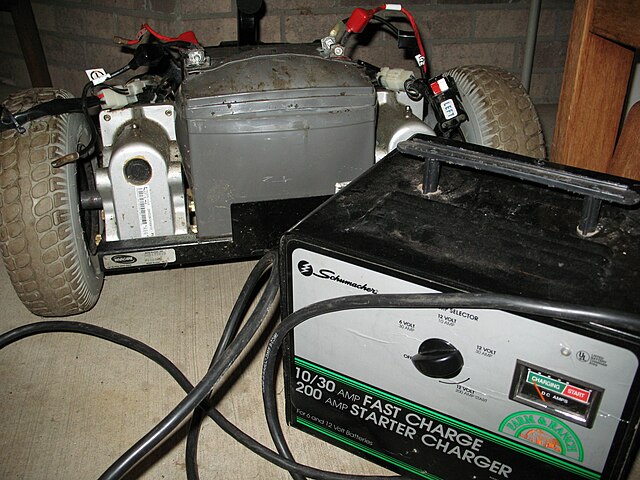A deep-cycle battery is a battery designed to be regularly deeply discharged using most of its capacity. The term is traditionally mainly used for lead–acid batteries in the same form factor as automotive batteries; and contrasted with starter or 'cranking' automotive batteries designed to deliver only a small part of their capacity in a short, high-current burst for cranking the engine.
A deep cycle battery powering a traffic signal
A deep-cycle battery hooked up to a charger.
Deep cycle batteries in an electric boat refit.
The lead–acid battery is a type of rechargeable battery first invented in 1859 by French physicist Gaston Planté. It is the first type of rechargeable battery ever created. Compared to modern rechargeable batteries, lead–acid batteries have relatively low energy density. Despite this, they are able to supply high surge currents. These features, along with their low cost, make them attractive for use in motor vehicles to provide the high current required by starter motors. Lead–acid batteries suffer from relatively short cycle lifespan and overall lifespan, as well as long charging times.
12-volt lead–acid car battery
Internal view of a small lead-acid battery from an electric-start–equipped motorcycle
Charge current needs to match the ability of the battery to absorb the energy. Using too large a charge current on a small battery can lead to boiling and venting of the electrolyte. In this image a VRLA battery case has ballooned due to the high gas pressure developed during overcharge.
Sulfated plates from a 12-V 5-Ah battery







